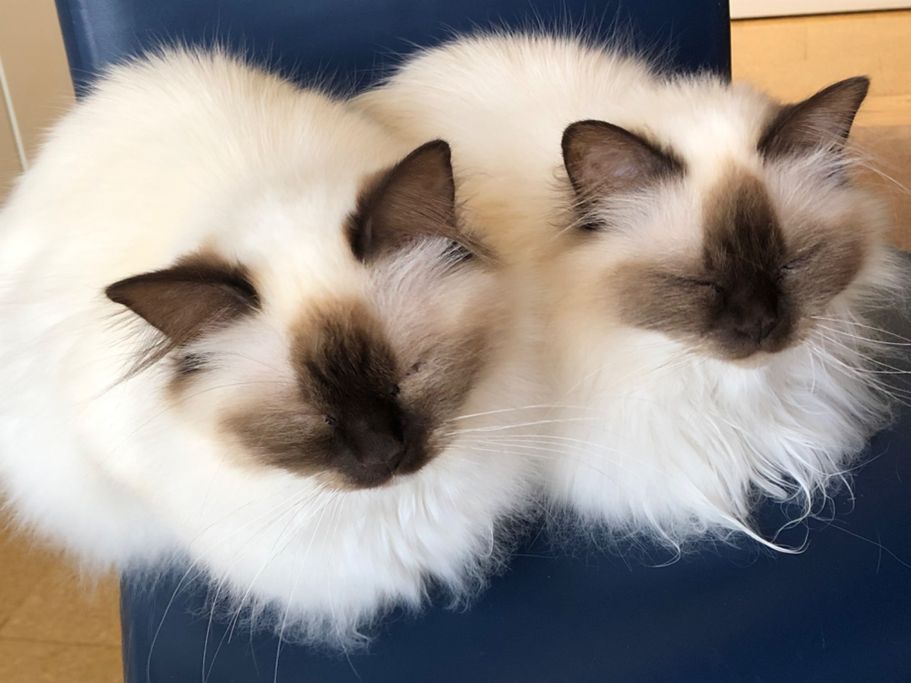
Guardian of Art
Estella
Mai 2025
Europe be watchful! The whole free world be watchful!
Trump may be demented, but the criminal gang around him is not. They have a clear goal: raw materials for the industries of the future. Hence the verbal attacks against Canada, hence the desire to buy Greenland. China could supply raw materials, but China is strong, not compliant. Hence the enemy. And China and Russia are close.
So, what should they do? The MAGA clique wants to try to drive a wedge between China and Russia, to win Russia over to their side by giving gifts. To do this, they are only too happy to sacrifice Ukraine, because if Russia gets Ukraine as a friend of the MAGAs, Russia can supply the raw materials that Ukraine is now demanding. The deal would be: we, MAGA, give you Ukraine, you, Russia, give us their raw materials in return.
What does the new power structure look like, according to MAGA's vision? The USA and Russia are fraternal, rich in raw materials, China is isolated, Europe is fragmented and powerless, Canada and Greenland are increasingly defenceless, Mexico is peripheral, and the rest of the world is subordinate to either Russia or the USA. America is Great Again!
What to do?
The most important thing: Europe must be united, strong, self-sufficient and determined. Europe must be represented in the world and must not hand over Ukraine or other free countries to the imperialists in the USA, Russia or China. This also includes an appropriate development policy. This also includes military strength, because "si vis pacem para bellum"! The old NATO is dead, a new NATO is needed, without the USA but including Ukraine. And Europe must support the opposition forces in the USA. And every single one of us is called upon: unconditional commitment to democracy and the rule of law, to freedom and diversity. But also sanctions against US products, targeted but painful. The MAGA gang must learn that it will hurt their own purse! Without the global markets the US industry would be nothing. And the global market, that's us!
(c) 2025 Stefan Hock
Eins meiner Lieblingsverbotsschilder in München!
Das wäre doch mal ein Thema für eine wissenschaftliche Arbeit in Jura: "Über die Rechtsfähigkeit unbeseelter Gegenstände". Oder in Philosophie und Logik: statt "Achilles und die Schildkröte" jetzt "Der*ie verfolgende Polizist*in und das abgestellte Fahrrad". Oder in archimedischer Physik: "man gebe mir einen festen Punkt und ich schleppe das Fahrrad ab".
Zu finden in der Amalienpassage.

Book Review
And the Academy Award for Best Supporting Actor goes to: Anchovies!
or
Why the smallest fish produces the biggest flavour.
When I was a kid (which is, by the way, quite a long time ago) my first encounter with anchovy was a small tube in the fridge labelled: “Sardellenpaste”, or anchovy paste. It smelled strange, fishy and salty, looked like pigeon droppings and obviously has been rarely used as witnessed by dried in rest around the nozzle. But, I loved it. A slice of bread, some butter and a drop of this grey-brownish wonder. Later in my life, in my teens, I had the opportunity to travel to Nice. Apart from making my first experiences with fellow humans of opposite gender, I stepped over something called Pissaladière. This sound as strange to a German as it presumably will for an English-speaking person, to P* being quite a vulgar term for getting rid of waste body fluids. But again, I learned that the word comes from Latin “pisces” for fish and “sal” for salt and the product, a kind of thin, crispy pizza dough with tomato spread, onions and anchovies got one of my favourite snacks until today (again, though similar to a pizza, the is no cheese on it – never, ever!). Later in my life I got pretty much into cooking. And cooking is not only about making things edible or easier to digest, but also about making things taste well, even better than well, taste great, delicious, overwhelming, worth some stars or toques or silver spoons or whatsoever. So you look over the shoulders of professional chefs (Youtube allows you to do this) or simply read some cookbooks. There it is:
- Caramelise some sugar …
- Add a glass of wine …
- A spoonful of tomato paste …
- Some dried and pulverized mushrooms …
- ... and this, and that ...
- and, some anchovies.
Obviously, this little fish, if added in even smallest quantities, enhances the aroma of nearly everything: Salad dressings, sauces, pizzas, pasta and many, many more.
Why is it so? Christopher Beckman lays it out in his book “A Twist in the Tail: How the Humble Anchovy Flavoured Western Cuisine”. It is the very high content of free glutamic acid (glutamate), giving Umami. He gives us a nice overview about where anchovies come from, how they’ve been used in the past, why they are sometimes neglected or underrated today and how they could improve the appreciation of the eaters of your dishes. Just don’t tell them, let them guess! All that spiced with some hints to recipes. But beware, it is not a cookbook, no collection of detailed and ready to uses recipes. It’s a food and culinary culture history book. Scientific enough the be valued by academics and conversational enough to be read just for fun. I personally miss a section about the rich culture of oriental and Asiatic anchovy products such as Nuoc Mam (or however it is spelled correctly), but this should and could be another project.
I haven’t read the book entirely yet, but I surely will and I’m looking forward to it. And I will continue to use anchovy in my cooking. While writing these lines, I immediately put the preparation of pizza dough on my to-do-list, for some nice home-made pissaladière. Enjoy it!
Beckman, Christopher: A Twist in the Tail: How the Humble Anchovy Flavoured Western Cuisine, Hurst Publ., London 2024
Disclosure statement: This is a purely private and non-commercial website. The opinions given herein are uniquely the author’s. The author has no commercial links whatsoever with the publishers or the author(s) of the book reviewed, nor is he in any way interested in the sales of the book. The author has received a free digital copy of the book for review purposes.
Alina, Estella und Daphina
Seit nunmehr 2 Jahren bei uns:
Frohe Feiertage!
N.B.: wir distanzieren uns ausdrücklich von durch Youtube eingeblendeten Videoempfehlungen.
Was Sie schon immer über Suppe wissen wollten, aber bisher nicht zu fragen wagten
Never underestimate the power of Soup (Fergus Henderson, 2007)
Was ist eigentlich eine Suppe?
Eine Speise in zwei Kontinuen: einmal im Kontinuum zwischen Brühe und Eintopf (oder gar Brei; bedenke, dass das deutsche Wort Gemüse von Mus kommt); zum anderen im Kontinuum zwischen salzig dünner Plörre und köstlicher Delikatesse. Die richtige Konsistenz einer Suppe herzustellen ist eine Kunst, egal ob klar oder gebunden, mit Einlage oder ohne, warm oder kalt, aus tierischen Produkten oder vegetarisch/vegan.
Ist es schwer, eine gute Suppe zu bereiten?
Nein.
Ist es einfach, eine gute Suppe zu bereiten?
Nein.
Woraus kann man eine Suppe bereiten?
Aus fast allem, was man auch sonst, zumindest theoretisch, essen kann.
Was ist wichtig beim Suppe kochen?
Wie immer beim Kochen, gute (d. h. aromatische) Zutaten, geeignetes Temperaturführen und Zeit.
Was sind "gute Zutaten"?
Alles, was schmeckt, z. B. Gemüseabschnitte, das dunkelgrüne vom Lauch, Stängel von der Petersilie, Fleischabschnitte, Knochen, Gerippe usw. Ein Beispiel: auch wenn man nur Hähnchenschenkel grillen will, sollte man dennoch ein ganzes Huhn kaufen. Die Schenkel kommen auf den Grill, aus dem Gerippe wird eine Suppe zubereitet und die Brustfilets kommen, kurz pochiert, als Einlage in die Suppe.
Was heißt "geeignetes Temperaturführen"?
Niemals sprudelnd kochen, sondern immer nur leise sieden. Wenn ich sprudeln koche, so wirbelt das Aroma in der Küche und die Suppe wird (meist) trüb. Wenn ich leise siede bleibt das Aroma in der Suppe und die Suppe wird auch ohne Abschäumen klar. Und, Suppe immer nur mit leicht geöffnetem Deckel bereiten (z. B. einen Kochlöffel unterlegen). Puristen sieden die Suppe ganz ohne Deckel, aber das ist in Zeiten der Energieknappheit schwerstens vermittelbar.
Muss man die Suppe abschäumen?
Nein. Das ist ein Unsinn, der allenthalben verbreitet wird. Suppe wird nicht durch den "Abschaum" trüb, sondern durch unsachgemäßes Kochen (s. o.). Der "Abschaum" ist kein Schmutz, sondern Proteine, Mineralien, Spurenelemente usw. Was sich in der Suppe nicht löst, sinkt zu Boden.
Wie lange braucht es für eine gute Suppe?
Das ist unterschiedlich. Wenn für eine vegane Gemüsebrühe eine halbe Stunde reicht, sind es für eine Rinderknochenbrühe gerne mal 8 Stunden und mehr. Zum Lösen der Gelatine aus den Knorpeln, Sehnen und Flachsen braucht es mindestens 6 Stunden.
Sind dann die Zutaten nicht verkocht?
Ja, sind sie. Sie haben ihr Aroma und Bestandteile an die Suppe abgegeben. Man kann aber durchaus nach dem Abseihen noch einen zweiten Aufguss machen und noch einmal 4 – 6 Std, köcheln. Dieser "zweite Aufguss" eignet sich gut zum Angießen beim Kochen. Mache ich meist bei Hühnerbrühe; bei Knochenbrühe fiesele ich das restliche Fleisch von den Knochen und mache daraus, kräftig gewürzt, einen Bolognese-ähnlichen Sugo. Gemüse ergänze ich durch frisches.
Was macht man, wenn man die Suppe nicht aufessen kann?
Die Brühe kann man auf jeden Fall portionsweise einfrieren.
Welches Gerät braucht man zum Suppe kochen?
Einen ordentlich großen Topf, z. B. 24 cm x 28 cm uns einen großen Seiher zum Abgießen. Topf zu maximal ¾ füllen. Deckel nur halb auflegen oder Überkochschutz aus Glas oder Silikon verwenden. Rechtzeitig die Hitzezufuhr reduzieren!
What made the Neolithic Revolution revolutionary?
Some ideas from the almost recent past.
Was the Neolithic Revolution a revolution? Yes and no. Of course, changing from moving around and hunting/gathering to fixed settlements with agriculture/cattle breeding was a turmoil. But, as to my modest knowledge, scholars now estimate the time, that it took was much longer than estimated earlier, maybe even some thousands of years.
What did our ancestors eat? It is now known that even Neanderthals mixed vegetables into their meat diet. They already knew which fruits of the soil you could eat and how you needed to prepare them. Wild cereals, berries, legumes, honey, maybe mushrooms, certainly hazelnuts and so on. Their diet was much more manyfold than we imagined until shortly. Be sure that our ancestors, homo sapiens, did not only interbreed with the Neanderthals, they also learned from each other.
What made stable settlements possible? When staying at one place for a longer period of time, you will surely continue to hunt. Some hunter groups go out, follow the herds, and come home after a few days with their prey. But at one point in time, they discovered that some grains, which had fallen to the soil, sprung out next spring. Time after time, after many experiments with successes and failures, our ancestors put aside some of their gatherings and established the first fields. Still continuing to harvest out in the wild plains and forests.
What made this lifestyle so successful? Bit by bit our ancestors experimented with their food and collected experience, what was, nourishing, satisfying, tasty and healthy. Meat was good (high in protein), wheat was easy to grow and a fine staple (carbon hydrates in abundance but only mediocre in protein), figs tasted sweet (but no proteins at all) etc. And then came legumes (or pulses). They had played only a minor role in earlier times, because they were burdensome to collect: a lot of time for a small result. But we find their remains still today in the tartar of Neanderthals’ teeth. Now you could grow these legumes, reducing harvesting efforts and increasing yield substantially. And, step by step, you find out that legumes are pretty high in protein (not as much as meat), and you find out that if you combine legumes with wheat or barley you get a result of even higher values of protein bioavailability than from meat alone. Heureka! That’s revolutionary! But simply combining legumes and cereals you could substitute meat. Add some figs for the taste and olives or nuts for their fat, and you got it!
And what about breeding cattle? Yes, to some extent it is possible within the boundaries of a fixed settlement. But all these cattle need a lot of food, vast grasslands, at its best. Surely not the precious corn and legumes. Milk is good but can cause pain in your belly and diarrhoea. Goats and sheep are easy to hold, cows are tricky to manage. You need shepherds to drive your cattle to fertile grassland, fences to keep them off your acres, and arms to ward of wolves and bears, or other tribes. Finally, if you keep them within your house, you may get a lot of diseases. Cattle breeding yes, but within limits.
How does it look today? Still today in most corners of the globe you will find a combination of legumes and cereals as the basic staple food. It starts in the bible, when Esau trades his firstborn rights against a lentil dish (note bene: lentils, not wheat bread!). Today its lentils or chickpeas with flatbread (wheat), dal (lentils) with rice, peas with rye bread, tofu (beans) with rice, beans with maize, and many more. And cattle breeding? Until recently and even today, many of the cattle breeding people lead a nomadic or semi-nomadic life. You had to move around with your herds and call it Transhumance, Almwirtschaft, or similar.
What was the motivation to change the lifestyle so thoroughly? Scarcity? Abundance? Alcohol!
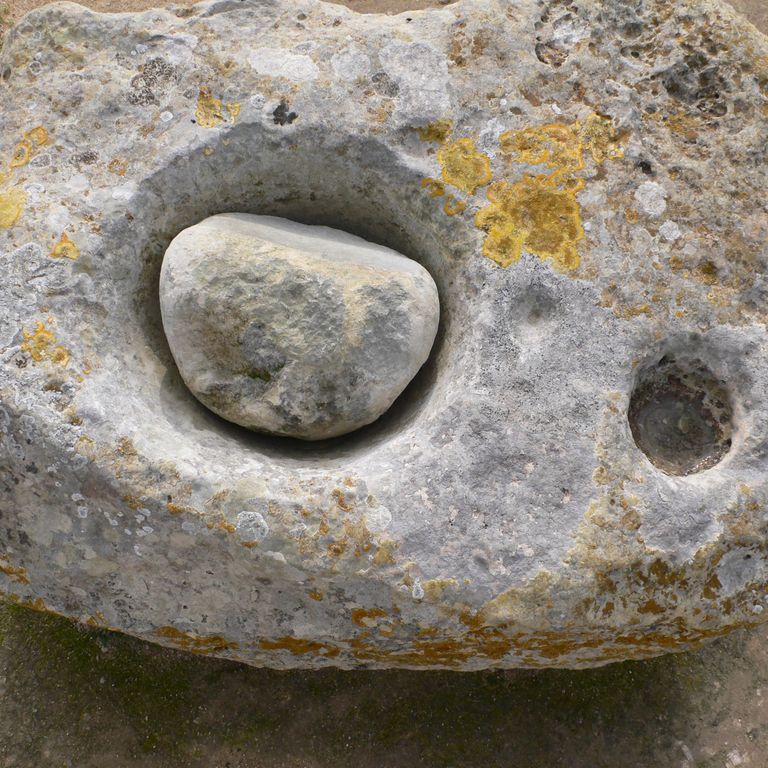
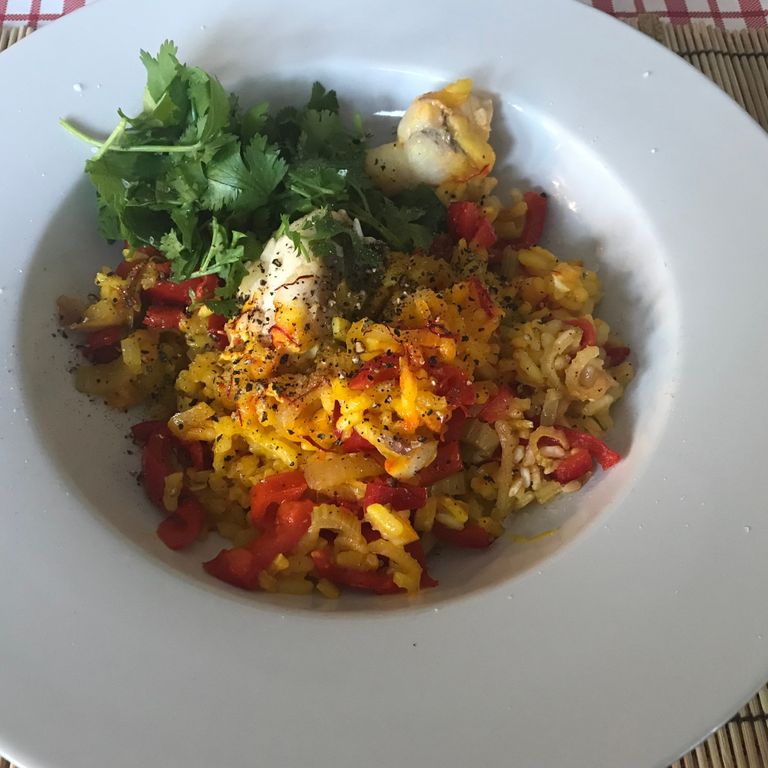
Monkfish Jambalaya with Fresh Coriander
"Cajun trinity", some monkfish fillets and saffron, together with Arborio rice. Add some garlic, lemon juice, bay leaves and salt. Garnish with fresh coriander. Simple, pure, tasty. Enjoy
Calf's liver, onions, apples and fresh thyme
Peel, cut in half and slice onions. Do the same with some apples (I prefer Boskop). Sauté the onion, add the apples when the onions start to soften. Add some salt and garnish on a pre-warmed serving plate. Now sauté the calf's liver, just briefly over medium heat, the liver should stay rare and soft. Deglaze with white wine, salt carefully and add fresh thyme. Serve upon the onion-apple mix and mashed, buttered potatoes.
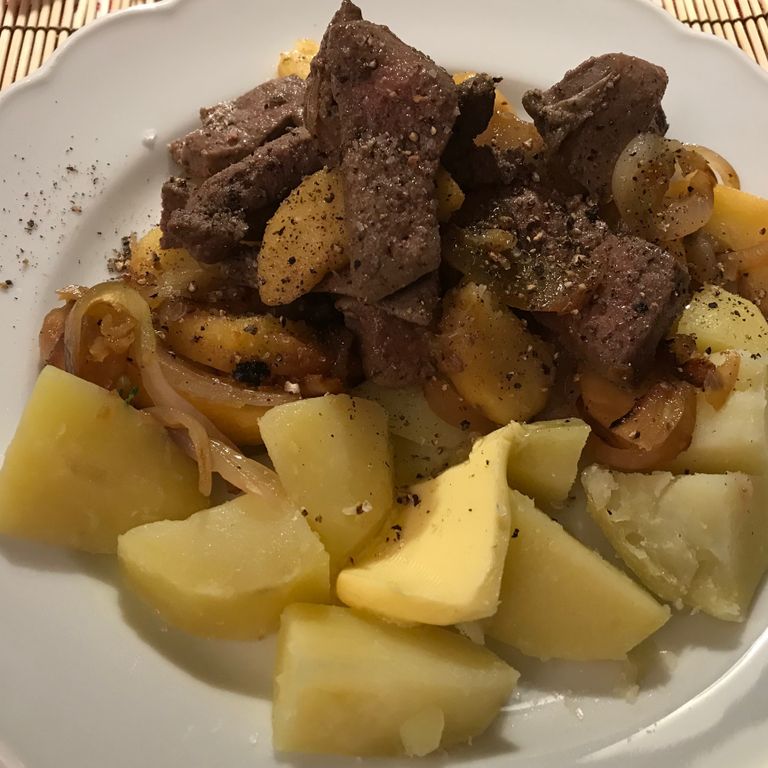
Tripes, white wine, black olives and Pecorino cheese
Beef tripes, onions, lots of garlic, neatly cut celery stalks, bay leaves, some salt and plenty of whine wine. Let braise for 4 to 6 hours on moderate heat, until tripes are tender. Add salted black olives, let them unite with the tripes and serve with Pecorino cheese.
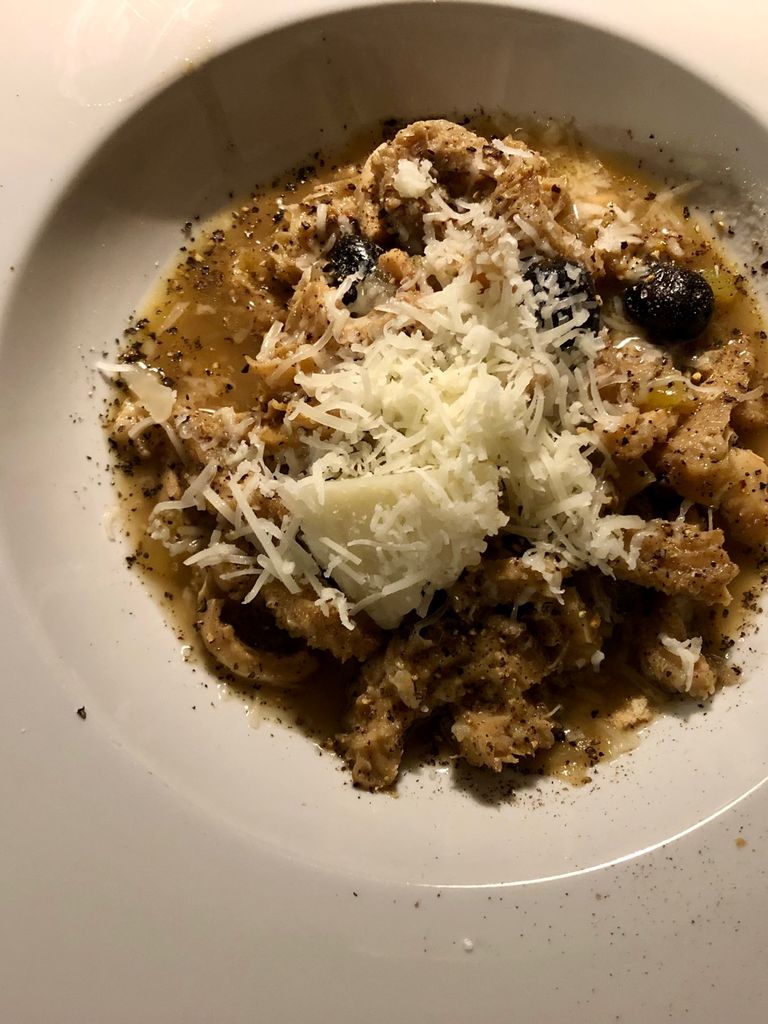
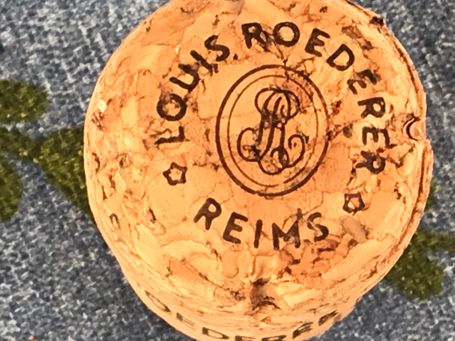

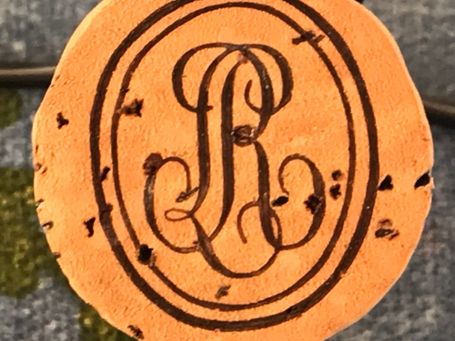
5 dishes from one duck
One duck too much for two? Buy legs or breast only?
No!
Try using the whole duck for 5 different dishes. No waste and you'll love it. And make sure to buy a large duck, free range and naturally fed.
Rillettes of duck and apples
Mince fat, skin and meat leftovers (but without rump, it may taste rancid). Dice a Boskop apple and an onion, slowly melt with the fat in a saucepan. The skin and onions are allowed to turn golden yellow. Season with salt, pepper and, if necessary, either thyme or marjoram (oregano). Serve on wood-baked bread with a garnish of radishes.
Roasted duck breast on a salad bouquet
Prepare a duck breast, using excess fatty skin to prepare rillettes (cf. above). Fry the breast, skin side first until golden, then turn and briefly let the flesh set get some color; deglaze with port wine or Madeira, allow to reach the desired core temperature in the oven. Let rest, cut into slices and serve with a salad bouquet.
Consommé with duck liver dumplings
Briefly roast the duck carcass with the wing tips, neck and root vegetables (also without rump, see above; but if available with heart, stomach, etc.); Cook concentrated consommé (low flame, 4 - 5 hours). Drain through a fine colander. Prepare dumplings with duck liver, stale rolls and eggs. season with parsley and muscat. Let simmer and serve with some chives.
Pasta with duck ragu
Mince a duck breast fillet (with part of the fat skin; the rest for making rillettes); Fry with onion, garlic, celery, carrots, parsley root and bay leaf, add Pomodori Pelati and then let simmer for 3 - 4 hours on a low flame. Serve with a nest of ribbon noodles; Sprinkle some parmesan on top.
Braised duck legs with chestnut and Brussels sprouts potatoes
Slowly stew the duck legs with echalottes, garlic, bay leaf and white wine in a roasting tray; it may take 1 1/2 hours until tender. Sauté the onions in a large saucepan, add the Brussels sprouts, peeled, pre-cooked chestnuts and diced, semi-hard boiling potatoes. Pour in a little vegetable (or duck) stock and cook for 20-30 minutes.
Wine recommendation: plenty!
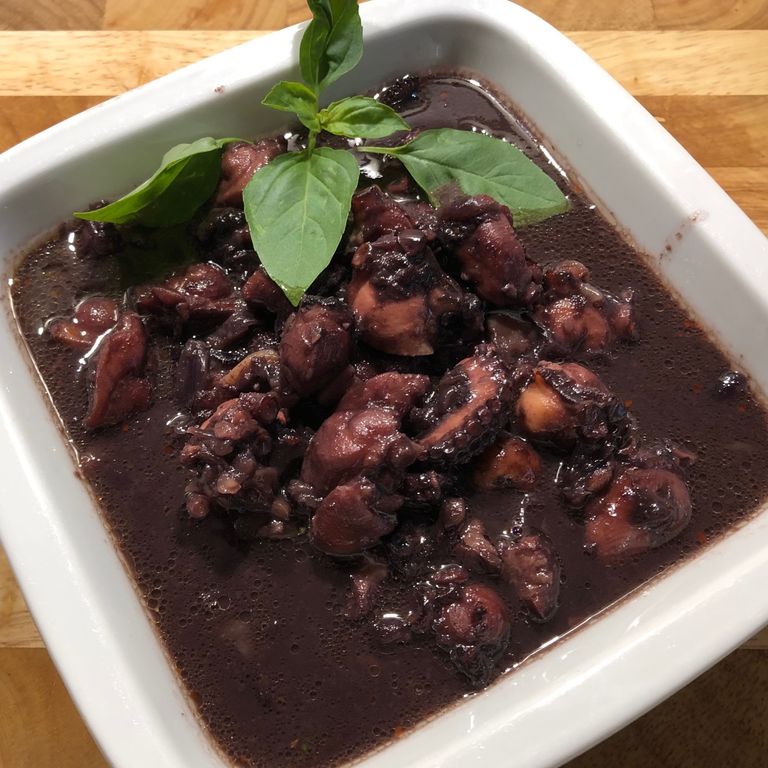
Besoffene Krake
Während Polpo oder Octopus bei uns meist liebliche Erinnerung and den letzten Italien- resp. Griechenlandaufenthalt wecken, erzeugt der Begriff Krake eher Abscheu. Vielleicht weil viele von uns noch die Erinnerung an die achtarmigen Riesenviecher im Kopf haben, die versuchen, Kapitän Nemo und sein Schiff in die Tiefe zu ziehen. Dennoch, für die Mutigen ein altes Italienisches Rezept: Polpo ubraico, besoffene Krake. Recipe: 1 frische Krake (korrekt müsste es eigentlich heissen"der Krake", damit "einen frischen Kraken", und das hat in diesem Zusammenhang nichts mit Gendern zu tun, sondern mit einem Unterschied zwischen der Fachsprache der Biologen und der Umgangssprache), reichlich Knoblauch, Lorbeerblätter, eine kleine Chillieschote und eine Flasche Roten (sic!). Kein Salz, die Krake ist selbst als Meeresbewohner salzig genug. Wer mag, ich z. B., schneidet auch noch Echalottes oder rote Zwiebeln in Streifen, die stehen nicht im Originalrezept. Krake in Stücke zerlegen, dabei Schnabel und Bauchraum putzen, mit Knoblauch /und ggf. Zwiebel) andünsten, reichlich Rotwein angießen, Gewürze dazu und ca. 1 Std. sanft schmoren. Den Deckel des Schmortopfes einen Spalt offen lassen, damit der Wein verdampfen kann. Aber Achtung: beim Schmoren liegt die Betonung auf sanft. Sanft geschmort wird die Krake zart wie Butter, heftig gekocht dagegen hart wie Gummi. Dazu Baguette, Pasta, Kartoffeln oder was auch immer (sollte die Soße gut aufnehmen, diese ist köstlich), auf jeden Fall noch ein Fläschchen vom guten Kochwein.
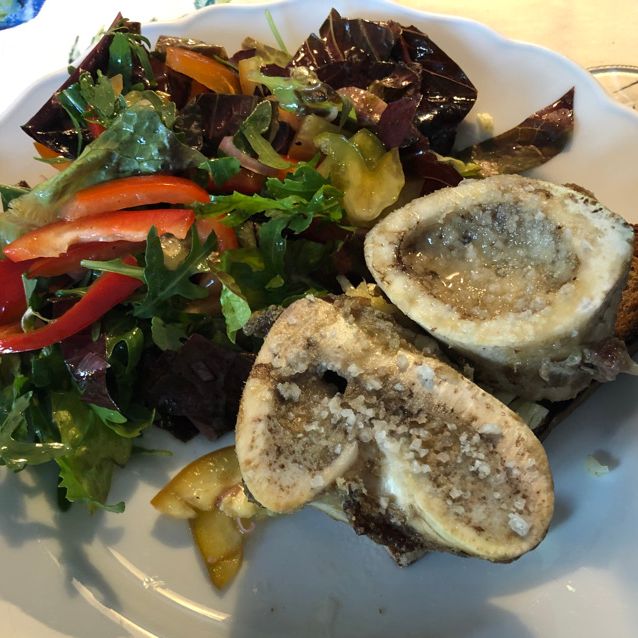
Best greetings from the epipaleolithic!
Bone marrow, roasted with some sea salt. With summer salads and a side of toasted bread.
8 Lessons Learned from Covid-19
About a year ago I wrote this little article. Today I think it is even more topical.
1. Covid-19 is different from all other plagues, humankind has suffered from and yet the same.
Covid-19 is not the deadliest disease, rabies is by far worse (lethality close to 100%, no treatment available). It is not the fastest spreading disease; Ebola is by far worse. It is not the most widespread one, tuberculosis is far worse and so on. We don't mention the historic curses of mankind, smallpox, pestilence, cholera and the Spanish flu have left most atrocious tracks of dead. They may be prevented (by vaccination or hygiene), treated or cured (e. g. by antibiotics, if bacteria are the cause). What's now so special with COVID-19?
- COVID-19 may be lethal, but lethality is highly discriminatory: age, gender, health status and social status.
- COVID-19 spreads very easily: just normal social interference may be enough to catch the ill (still close to Ebola, but far from Rabies, where you still have to be injured by an infected animal).
- Spreading of COVID-19 is a question of how efficiently we can contain it. Social distancing seems to work pretty well (but has severe consequence of its own).
- COVID-19 may be treated: even severe cases can be treated by intensive care, reducing lethality somewhat. Treatment may be improved in the future, when cures and vaccines will be developed (I'm optimistic, that they will; the question is when they are widely available).
And still it's the same: we face a state of inability to handle this menace, despite our advanced medical knowledge and technological abilities. It has caught us cold. We have to abandon our civil liberties, face economic shutdown, stock exchange crashes, unemployment and finally a significant number of casualties. Just like in Justinian's time, during the renaissance or after WWI. It's just like then that the feeling of sudden powerlessness hurts us the most
2. We haven't been prepared at all.
In naïve disbelief that something like Covid-19 could happen, we ignored all warning voices from scientists or the WHO. And we didn't prepare, neither medically nor politically, socially, economically or ethically. It is at least positive that most of our scientists, politicians, fellow human being and those responsible for our economy have managed to adapt rather fast (with, admittedly, some sad exceptions). Normative and applied ethics still need to pick up.
3. Corona is not a health issue, it's an ethical issue.
And these are the questions: it can be treated, even the severe cases can obtain some relief and increase of the survival rate. But emergency care is expansive. Not only the treatment itself, but holding the capacities ready, and not for standard loads, but for peak loads! In non-pandemic times huge idle ER-capacities may seem as a luxury or even waste of money. But in pandemic times they quickly became rare. And all of a sudden medical staff had to decide whom to treat in ER and whom not (means: sentenced to death, in the worst case). Military med staff is trained in this kind of decisions, called "Triage"; civil med staff rarely. And I envy none of them having to decide such cases. And there is another decision to be made: prevention, as much as possible through curfews, shutdowns interdictions etc. or let I go in order to obtain herd immunity. The latter would be pretty efficient, since the disease spreads fast and mortality is moderate compared to other plagues. But again, it would imply that we risk an atrocious death toll, especially among the group a high risk: elderly, prestressed by other health issues, socially or economically underprivileged. We daily see the casualty numbers and can compare the countries where prevention worked with those where it failed.
4. There may be Triage with infected, there will be Triage among values.
Most countries chose prevention, imposing severe restrictions on any public life, considered by many as stranglehold of our civil liberties. It is, but it's triage of values: the freedom to go out anywhere, anytime or the protection of the frail. The right to party or the life of a few retirees. The crucial question becomes: when are those restrictions to end? Will we retain democratic control over this, or do we have to succumb to the verdict of scientist or, what worries me the most, the ideas of (some) politicians (who don't listen to scientists).
5. Rethink your values, and remember which of those, up to now considered as self-evident, are real values!
Economist have tried for quite some time to find objective measurement for equity, fairness or justice. One idea to such objectivation could be the following thought experiment: You ask a person to distribute resources (or economic wellbeing or whatever) within a society, where the person itself is a member of. The individual appreciation of the distribution should be considered equal, fair or just. But there is a veal of ignorance: the person does not know who he will be in the society. If the distribution is very unequal, or test person may end up as a millionaire or as a poor. It is to be expected that a majority of test persons distributed with at least some degree of equality, in order to minimize their own risk of ending up as a poor. I don't remember what the real outcome of these experiments have been and the critical scientific discussions thereof, but I find this idea very intriguing: what anti-pandemic measures, if any at all, would you impose if you don't know yet who you will be in the society concerned. The healthy sportsman, the pre-school kid the working-class mommy or the overweight retiree with chronically high blood pressure. And now apply this line of thinking to the current pandemic, would you opt for the riskier rules and maybe die from it due to your decision? Or would you go for a safer way?
6. No organization is fault-free, but whenever, talk about with them and not about them!
Written in one of my favourite pubs, just above the regulars table: we talk with people and never about people. Should be self-evident but isn't. What is true for people should be true for organizations. Indeed, most organizations do, most of the time, a good job, for our and our society's benefit. Sometimes they fail, luckily rare enough.
7. Never shift the blame!
Remember when as a kid you pinched some chocolate from the forbidden drawer in the kitchen and your mom caught you, your cheeks still filled with that sweet stuff? Would you now shift the blame on your pet dog? See its eyes when getting scolded for something, he didn't do! Absolute authority implies absolute responsibility, never one without the other!
Whoever says he/she is not responsible for something admits that his/her authority is inexistent.
8. We don't need less globalization, we need more.
Nationalistic isolationism is a poison to global welfare. And it is spreading everywhere. World population is approaching 8 bn and terrestrial land surface is ca. 150 million square kilometres (source Wikipedia). Urbanization is probably around 55%, with a tendency to increase at high speed. We can't afford to isolate. We already stick too densely together! Global integration needs to start at a very local level, within your community, and, at the largest extent, comprise the whole world. We need fast, honest and open communication. I'm truly convinced that global integration, mutual understanding and free communication will help us to mitigate the risk of future pandemics. And future pandemics will come, that for sure.
May 2020
About the author: Stefan Hock (*1957) lives near Munich. As a studied economist he works as a consultant, coach and trainer for corporate and financial strategy and negotiations. Apart from his professional interests he likes philosophy, cooking, rock music and motorbiking.

Reduce Food Waste!
I've recently been queuing at my butcher's barrow when the woman before me bought a pork shoulder. When she asked the butcher to cut off the rind, I was shocked deep in my Bavarian soul. I had to cry out that the rind is the best part of a pork roast! No, she replied, it's too fatty, it doesn't get neither tender nor crunchy, the kids don't like it etc. Ok, I said, everybody to his liking ...
But when the butcher was about to put the rind away in his waste bin, I cried out again!
You won't throw it away, or? I asked him and he replied yes, but if you want it ... And I said of course I do!
So I got about 20 cm2 of wonderful, fatty pork rind. So what to do with it? I decided to make a lentil dish:
Pardina lentils, onion, garlic, celery stalks and some cooking wine. Pepper and salt, of course.
Cut the pork rind into long stripes lengthwise (3 cm wide) and then into small stripes (1/2 cm). Dice onions and garlic and saute it in a sautier or wok-pan, some 20 minutes or so. Add some cooking wine, and the cut celery stalks. Then add the lentils and water (about 3 times the volume of the lentils.
Simmer it for another 30 - 40 minutes. Season finally with salt (thrifty) and pepper (generously).
Add chopped parsley or any other herbs, if you like.
By the way, I used only about half of my pork rind. I will prepare the remaining bit tonight, but I don't know yet how ...
While enjoying the meal, I got the idea of writing a bit more about pulses: how leguminous plants became the secret driver of the neolithic revolution.
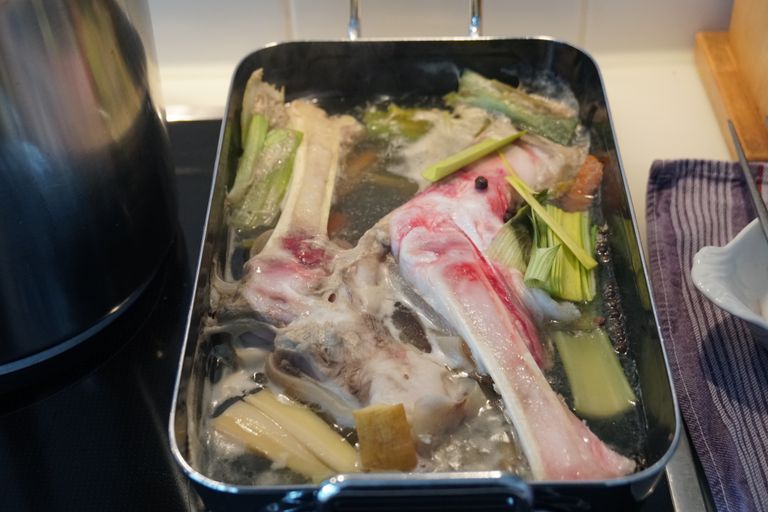
The Pantophage on N2T eating
The Pantophage practices Nose to Tail eating ("N2T") since the late 70ies. Call it Kronfleischküche, Innereien, offal (from an old Germanic word "Abfall" or waste), quinto quarto (the fifth quarter), tripes, chitlins or whatever you like, it contains the most savorous pieces of the animal.
In the Pic, you see veal trotters cut lengthwise, simmered in some white wine, veggies and water. 20 more minutes in the stove with heat from above, then enjoy the bone marrows on toasted rye bread, slurp the well-softened skin off the bone or make galantine and use the remaining broth to enrich your sauces.
More on this topic to come soon ...
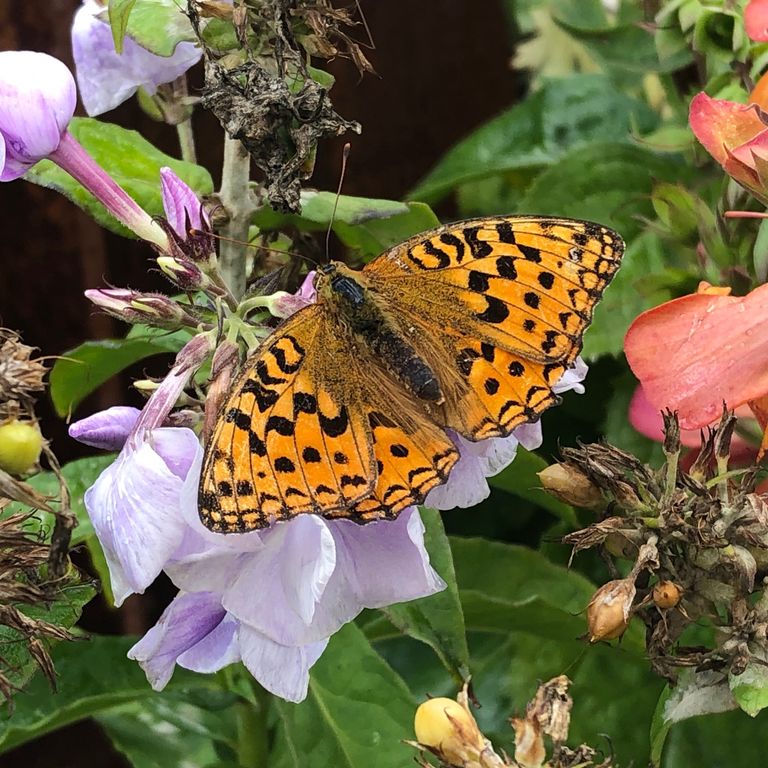
Ea nam legere mentitum prodesset
Cetero oporteat sensibus his eu. Has ex vidisse perpetua, vis partem mollis mandamus at. Ea nam legere mentitum prodesset, no quo lucilius liberavisse, te oratio debitis omittantur eos. Sea ea iusto detracto, ut scripta sapientem suavitate cum, nam deleniti perpetua intellegam an. Ei per officiis detraxit probatus, vim at graecis tincidunt.

